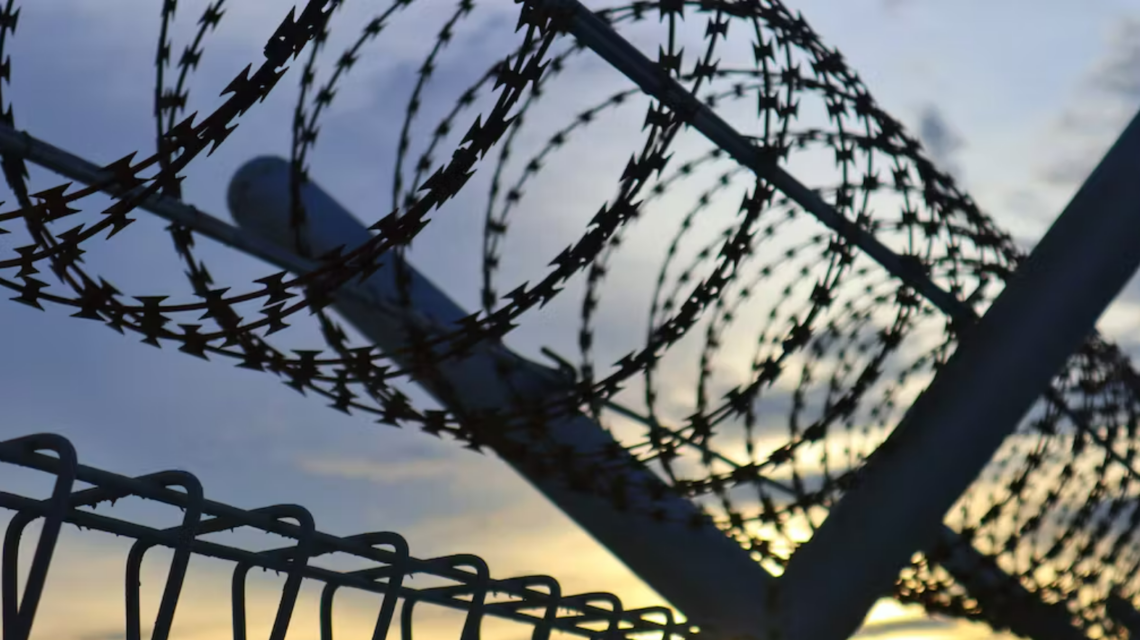By: Nicholas De Dominic, Associate Professor of Writing, USC Dornsife College of Letters, Arts and Sciences
In spring of 2023, I taught a class on memoir at the California Institution for Women, a medium-security facility, in Chino.
The course focused on autobiographical writing. Each week, students were asked to draft narratives focused on their life story and its larger social context.
In addition to writers-in-custody at the prison, the class enrolled University of Southern California students. Every week, my colleague and I drove 12 USC undergraduates out to the prison to join their incarcerated peers in class. Both populations received college credit for their work.
After the class ended, I received a thank-you note from one of our incarcerated students. Jaime – I’ve changed her name for privacy – wanted to let me know that she was writing more than ever to prepare for her release. She said the USC students were a model for her, and she could see herself being friends with them on the outside.
I have taught in prisons and jails for 15 years, both as a volunteer and as the director of USC’s Dornsife Prison Education Project. My teaching and writing focus on how everyday speech can find its way and make lyric expression.

Education for inmates leads to lower rates of re-offending after release. Jupiterimages/Stockbyte via Getty Images
USC’s Dornsife Prison Education Project offers courses for enrichment and college credit to people within California correctional facilities. The program organization also sponsors projects like criminal record expungement clinics, during which law school and community volunteers help people clear their criminal records.
Jaime’s note wasn’t the first I’ve received since beginning to teach in prisons, but it was one of the most meaningful. This was the first semester my university made an important investment by granting incarcerated students credit for their work. Until this point, PEP’s courses were offered solely for enrichment.
Cost of incarceration
Today, there are over 2 million people in jail or prison in the United States, and annual spending on incarceration exceeds US$80 billion.
This $80 billion may underestimate the true economic picture. Larger social costs associated with mass incarceration exceed $500 billion annually. Most Americans believe the goal of incarceration should be rehabilitation, but because of the climate of violence in most prisons, very little actual rehabilitation takes place. Recidivism rates support this: Seven out of 10 people will be arrested again within five years of their release.
Both spending and rates of incarceration have increased sixfold over the last 50 years, reaching a peak in 2009 and dropping slightly since then with little to no effect on re-offense rates or public safety. Mass incarceration has proved somehow to be both extraordinarily expensive and preposterously ineffective.
But research shows that one of the most effective ways to make real change when it comes to mass incarceration is by expanding access to education. As soon as a person who is incarcerated steps into a classroom, their likelihood to re-offend decreases. With each educational milestone achieved, those rates continue to go down.
Opportunities slowly growing
Participation in higher education programs increases critical thinking and raises potential future earnings, with the benefits extending beyond the individual to the community as well.
Despite these clear benefits, most prisons only offer access to high school equivalency classes and testing, and some vocational classes. Few offer post-secondary educational opportunities. Only approximately 202 credit-bearing college programs exist in U.S. prisons. These are mostly offered to men imprisoned on the East and West coasts, even though women’s incarceration rates have increased by 525% since 1980.
Over the last decade, I’ve witnessed incredible growth of prison education. When I began this work in 2006, only a handful of institutions granted Bachelors of Arts degrees to incarcerated people. But recently, director and project manager positions were posted by schools like Northwestern, Wesleyan and Georgetown universities. In the next five years, I expect these programs to multiply.
Driving this expansion is the fact that in December 2022, Congress restored access to Pell Grants for incarcerated students. In July 2023, an estimated 463,000 incarcerated people will become eligible for federal student aid.
This increased accessibility to federal money for incarcerated students has created a new revenue stream for colleges and universities. Many schools will look to compete for these federal dollars, and incarcerated people will have more choices when it comes to their education.
A heavy lift
But these new opportunities bring new potential problems.
First, more money creates renewed motivation for predatory institutions to exploit an already vulnerable population. I regularly meet students who have several degrees from pay-to-play degree mills. Many of these students are the first in their families to attend college and are navigating the process alone – a reality that makes them susceptible to exploitation. With the increase of federal dollars, I expect more for-profit universities to offer incarcerated people degrees with nominal utility.
Beyond bad actors, many smaller regional universities and colleges are facing what’s been dubbed the “enrollment cliff,” or a drop in the population of traditional students beginning in 2025 due to a declining U.S. birth rate. As a result, they are looking for nontraditional students to fill the gap, including incarcerated people.
I fear a massive onslaught of new players rushing to meet this need will lead to careless program design and speedy implementations.
Hard to do well
This is a concern because prison higher education programs are incredibly difficult to administer. Space within prisons is at a premium. Moving students from one area to another presents logistical challenges.
Best practices within prison education have been notoriously difficult to define because of how site-specific programs are. Even within large, well-funded correctional systems like California’s, I’ve observed massive cultural differences between facilities that are across the street from each other.
Classes are frequently canceled due to the day-to-day operations of the prison, making it difficult to deliver good instruction. For example, if a typical course requires a certain amount of instructor-to-student contact hours and classes are regularly interrupted due to prison trainings, audits and security concerns, how does the program make up those missed classes?
Students often need different levels of support services due to varying, and often low, literacy levels. These services are available on campus, but creating them in a prison is next to impossible.
Further, students may be transferred from one prison to another where the programs they’ve begun are no longer available.
Persuading faculty to teach in prison in addition to their usual class load at the university adds yet another barrier.
Managing a program that offers higher education in prison necessitates the active management not only of law enforcement bureaucracies, but of complex university ones that are slow to adapt to change. Yet unlike on a college campus, one miscommunication in prison – like someone missing an email – can put a class on hold for an indeterminate amount of time.
I’ve observed institutions enter prisons and then abruptly disband programs after problems arise, abandoning students already distrustful of the system.
Jaime’s letter proves the power of these programs on the individual. A review of prison research concludes the same thing.
As more colleges invest in these populations, I’d argue these new programs must deeply invest in this population and commit to providing the opportunities they create. It’s important to offer incarcerated students the same support systems that traditional campus students receive, while being fully aware of the challenges they face.
Otherwise, these programs may in fact disappoint students like Jaime rather than inspire them.


















